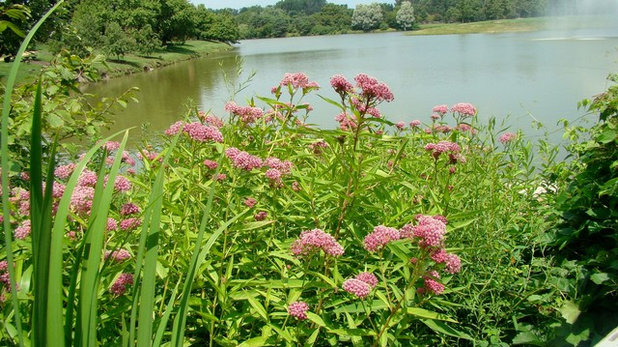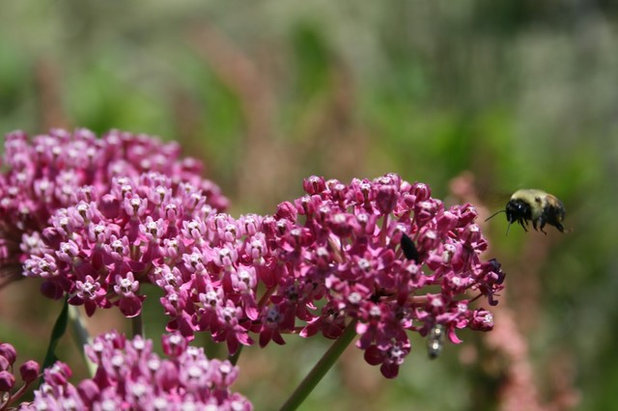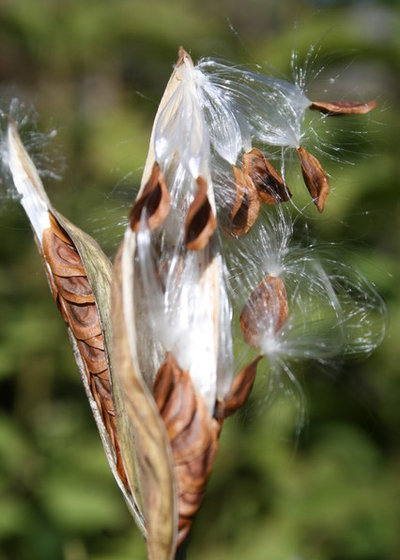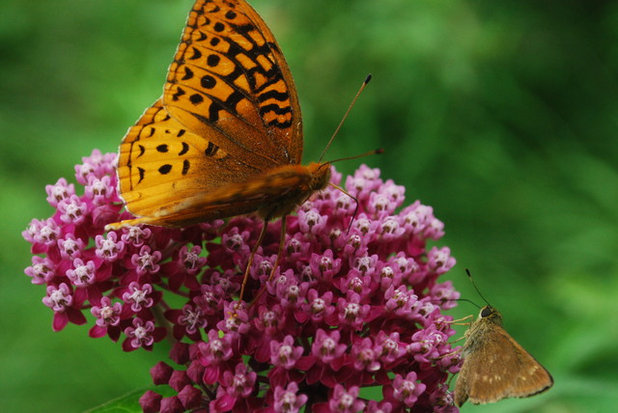Swamp milkweed (
Asclepias incarnata) is one of my favorite milkweeds. It’s a well-behaved, clumping stunner that brings in far more monarch eggs than other gardenworthy species I’ve tried. With wintering monarch numbers in Mexico for 2015 at their second lowest ever, and many government and nonprofit programs revving up to provide more native plant habitat for monarchs and other pollinators, swamp milkweed should be a staple in your butterfly garden.
You’ll enjoy this adaptable plant’s vanilla fragrance, ornamental seedpods and upright form, as well as watching monarchs come lay eggs on it that develop into voracious and charming caterpillars. In addition, milkweed is also a host to many other insects, from milkweed bugs and beetles to tussock moths — it’s truly an important plant for lots of wildlife.

naturalmidwestgarden.com
Botanical name: Asclepias incarnataCommon names: Swamp milkweed, red milkweed, rose milkweed
Origin: Native from North Dakota to Texas, east to New England and Georgia
Where it will grow: Hardy to -40 degrees Fahrenheit (USDA zones 3 to 9; find your zone)
Water requirement: Moist to medium soil
Light requirement: Full sun to partial sun
Mature size: 2 to 4 feet tall and 2 to 3 feet wide
Benefits and tolerances: Very adaptable, taking more shade and dry soil than the “swamp” in the common name suggests
Seasonal interest: Blooms in midsummer, followed by ornamental fall seedpods
When to plant: Potted or bare-root plants can be planted from spring to fall.

Benjamin Vogt / Monarch Gardens
Distinguishing traits. Noticeable from a distance to humans and pollinators, swamp milkweed has a nice spicy vanilla scent like no other plant. It’s fairly care free and luckily often for sale at most nurseries. Make sure you ask if it’s been treated with pesticides, because you’ll need a clean plant if you’re hoping to raise monarchs.

Benjamin Vogt / Monarch Gardens
How to use it. Since swamp milkweed can be a bit taller than many ornamental wildflowers, placing it in the middle or center of a border or bed may be helpful. It remains perfectly upright and would look great as a single specimen or in groups of three surrounded by little bluestem (
Schizachyrium scoparium), prairie dropseed (
Sporobolus heterolepis) or even many sedges (
Carex spp).
 Planting notes.
Planting notes. In the wild, swamp milkweed is found along marshes, streams and ponds, as well as in open prairies and woodland edges in clay to loam soil. I use it in partial shade in dry clay soil as well as in full sun in medium to slightly moist clay.
You can plant it at almost any time of year. If you’re growing it from seed, it will need cold, moist stratification; this is easily done by sowing outdoors in late fall through late winter, or indoors with a fridge. (Place seeds in a folded, damp wrung-out paper towel in a baggie for one to two months.)
Photo by Joshua Mayer





